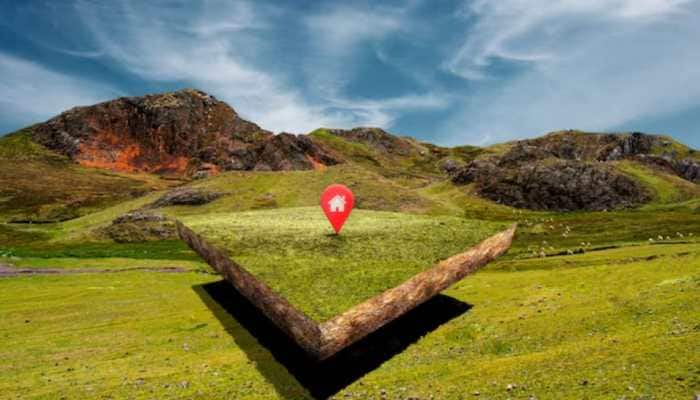NASA shares time-lapse video of island forming from underwater volcano - Watch
The new study offers insight into its longevity and the erosion that shapes new islands.
Trending Photos
) Image courtesy: NASA/Damien Grouille/Cecile Sabau
Image courtesy: NASA/Damien Grouille/Cecile Sabau New Delhi: Looks like Hawaii isn't the only series of islands formed from underwater volcanic eruptions.
NASA has shared a time-lapse of a Pacific island named 'Hunga Tonga-Hunga Ha'apai', formed from the ash of an underwater volcanic eruption that lasted from December 2014 to January 2015.
While it was initially expected to stay above sea level for only a few months, new satellite observations have led scientists to estimate it could survive around six to 30 years.
The island is a 400-foot (120-meter) summit nestled between two older islands – visible to satellites in space.
According to the NASA study, Hunga Tonga-Hunga Ha'apai is the first island of this type to erupt and persist in the modern satellite era, it gives scientists an unprecedented view from space of its early life and evolution.
The new study offers insight into its longevity and the erosion that shapes new islands. NASA believes that understanding these processes could also provide insights into similar features in other parts of the solar system, including Mars.
(Video courtesy: NASA Goddard)
The most dramatic changes to the island occurred in its first six months. Initially, the new island was relatively oval and attached to its neighboring island to the west. However, by April analysis of satellite imagery found that its shape had changed dramatically.
In May, the southeastern rim of the interior crater wall was washed over by the Pacific Ocean, opening the crater lake to the ocean. At this point both Garvin and Slayback thought this might be the end of the island. But by June, satellite imagery showed that a sandbar had formed, closing off the crater. While the island continued to evolve, it was more stable by late 2016.
The new island is perched on the north rim of a caldera on top of an underwater volcano that stands nearly 4,600 feet (1,400 meters) above the surrounding the sea floor, according to seaborne bathymetry measurements made by geologist and co-author Vicki Ferrini at the Lamont-Doherty Earth Observatory at Columbia University in Palisades, New York, NASA said.
Evidence of past eruptions from other, smaller domes are also apparent around the rim of the caldera, though few break the surface.
(Video courtesy: NASA Goddard)
Wet environments such as these combined with heat from volcanic processes may be prime locations to search for evidence of past life.
Stay informed on all the latest news, real-time breaking news updates, and follow all the important headlines in india news and world News on Zee News.
Live Tv







)
)
)
)
)
)
)
)
)
)
